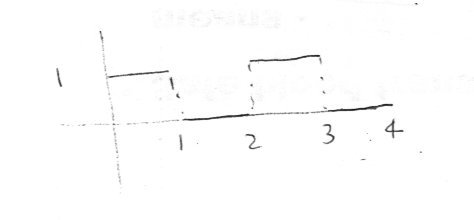Leaderboard
Popular Content
Showing content with the highest reputation on 01/05/20 in all areas
-
What would we call it if Iran had killed Secretary of State Mike Pompeo in a drone strike, or if they’d assassinated the modern day equivalent of David Petraeus and Jim Mattis... bc that’s what we just did to them. Meanwhile... from ABC News: The U.S. military has confirmed that there has been a terror attack on a military base in Kenya that houses U.S. military personnel.2 points
-
As with most things regarding Trump, it’s open to interpretation and requires a degree judgement... hence their massive focus on installing federal judges... so more judgements go their way. The idea is that if an attack is imminent, the president can’t be hamstrung to stop it merely because he was supposed to first get approval from congress. If a bomb is about to blow up a stadium or a missile is in the air and heading toward a major US city, then the commander in chief must be able to respond with quickness and urgency and without going first to congress. This is how it’s been done and how the courts have ruled when challenged. In this scenario, however, the General wasn’t the person doing the strike. We could’ve killed any of his agents who were placing bombs or who were readying for an attack, but he was a strategic planner. Nothing he was personally doing was imminent. He was surely a bad guy responsible for lots of bad things and it’s probably for the best that he is now gone, but what we did was assassinate him. We didn’t prevent him from personally shooting up the airport or prevent him from personally putting neurotoxins in the water supply. Those types of threats are imminent. His ability to plan and inspire others was not, and that means the president needed congress to sign off first; a congress generally represented by the gang of 8; a congress who had to learn about the strike from news organizations reporting from the Middle East Again though, it’s open to interpretation and judgement. It’s also unlike any and all historical precedent. I’ve tried giving the president the benefit of the doubt, but much like Lucy and the football with Charlie Brown, he’s squandered my trust too many times to do it again. Fool me once, shame on you... fool me twice, shame on me.2 points
-
1 point
-
Yes indeed the Laplace and Fourier transforms are related and very similar types of integral transform. You are effecteively asking if the 'composed time varying signal' in your diagram can be processed or decomposed into simpler signals. This is the question also answered (task accomplished) by the Fourier Transform which decomposes into simusoids. Note these simpler signals are periodic in nature. Non periodic signals may well not converge when the integral is taken. So if there periodic signals embodied in your 'composed signal' the integral proabably will not converge ie the method will not work. . The Laplace transform is actually more powerful in this respect since you can take (and untake) the Laplace tranform of allsorts of peridoc and other functions such as square waves, step functions, sawtooth waves and staircase functions. The 'formula' for the Laplace transform of a periodic function f is [math]L\left( f \right) = \frac{{\int_0^p {{e^{ - st}}} f\left( t \right)dt}}{{1 - {e^{ - ps}}}}[/math] so for the square wave shown [math]L\left( f \right) = \frac{{\int_0^2 {{e^{ - st}}} f\left( t \right)dt}}{{1 - {e^{ - 2s}}}}[/math] [math] = \frac{{\int_0^1 {{e^{ - st}}} dt}}{{1 - {e^{ - 2s}}}}[/math] [math] = \frac{{1 - {e^{ - s}}}}{{s\left( {1 - {e^{ - 2s}}} \right)}}[/math] [math] = \frac{1}{{s\left( {1 + {e^{ - s}}} \right)}}[/math] Which may be useful if your input data is digital. Does this help?1 point
-
I think maybe you shouldn’t presume to tell me what I was talking about. I said it’s up to congress. And the war powers resolution was enacted by...congress. And you had stated . “If a declaration of war is not defined, then you cannot claim that what he did was a declaration of war.” and I NEVER SAID HE DECLARED WAR You may have been talking about declaration of war, but I had moved past that.1 point
-
Why would it do that? The torque drops to zero, but there would still be a angular speed A photon cannot be absorbed by a free electron. E is energy and p is momentum1 point
-
I didn’t say what he did was a declaration of war, I said it was an act of war. And if you are going to apply a different standard to this part of the constitution as to much of the rest of it, then you’re right - there is no discussion to be had. If everything in the constitution were clearly defined, the SCOTUS would have nothing to do.1 point
-
The brain has it's limitations just like everything else. But there impressive nonetheless. https://www.livescience.com/53751-brain-could-store-internet.html1 point
-
Henrietta Lacks's immortalised cancer cell line was an important breakthrough.. https://en.m.wikipedia.org/wiki/Henrietta_Lacks Evolution of bacteria gaining resistance to vaccines recorded by camera on timelapse video: At the end of the video there are showed new branches of bacteria highlighted with various colors. Researcher can take samples of two or more such branches and compare differences in DNA between them.1 point
-
1 point
-
Higgs field with above [math]\mathcal{L}=(D_\mu H)^\dagger D^\mu H-\lambda(H^\dagger H-\frac{v^2}{2})^2[/math] v=246 GeV Quartic coupling [math]\lambda=m_h^2/2v^2=0.13[/math] [math]\langle H^\dagger H\rangle =v^2/2[/math] Fermions (matter content) (goal tie in CKMS and Pmns mixing angles (latter for leptons)) will require unity triangle... [math]\displaystyle{\not}D=\gamma D^\mu[/math] self reminder Feymann slash contraction of the gamma matrix with a four vector [math]\displaystyle{\not}a=\gamma a^\mu a_\nu=\gamma_\mu a^\nu[/math] a is any four vector.1 point
-
Pulling this post back to where I can find it to add Yukawa couplings details this weekend [math]\mathcal{G}=SU(3)_c\otimes SU(2)_L\otimes U(1)_Y[/math] Color, weak isospin, abelion Hypercharge groups. Couplings in sequence [math]g_s, g, \acute{g}[/math] [math]\mathcal{L}_{gauge}=-\frac{1}{2}Tr{G^{\mu\nu}G_{\mu\nu}}-\frac{1}{2}Tr {W^{\mu\nu}W_{\mu\nu}}-\frac{1}{4}B^{\mu\nu}B_{\mu\nu}[/math] Field strengths in sequence in last G W B tensors for SU(3),SU(2) and U(1) Leads to covariant derivative [math]D_\mu=\partial_\mu+ig_s\frac{\lambda_i}{2}G^i_\mu+ig\frac{\sigma_i}{2}W^i_\mu+igQ_YB_\mu[/math] Corresponds to [math]G_{\mu\nu}=-\frac{i}{g_s}[D_\mu,D_\nu][/math] [math]W_-\frac{I}{g}[D_{\mu}D_{\nu}][/math] [math]B_{\mu\nu}-\frac{I}{\acute{g}}[D_\mu,D_\nu][/math]1 point
-
Both Orion and myself do, we're breaking apart the relations that went into the OP Langrene. Right now I'm trying to determine if it's canonical or conformal by looking at the EW Langrene through symmetry break via the Higgs. Which will confirm the Higgs and Yukawa couplings underbrace sections. We're both learning from this gives us a refreshing challenge. The Yukawa section is rather challenging. I've already confirmed the Higgs and Dirac covariant derivative forms.1 point
-
[latex]\begin{pmatrix}\acute{d}\\\acute{s}\\\acute{b}\end{pmatrix}\begin{pmatrix}V_{ud}&V_{us}&V_{ub}\\V_{cd}&V_{cs}&V_{cb}\\V_{td}&V_{ts}&V_{tb}\end{pmatrix}\begin{pmatrix}d\\s\\b\end{pmatrix}[/latex] Electroweak correlations [latex]\mathcal{L}=\mathcal{L}_{gauge}+\mathcal{L}_f+\mathcal{L}_\phi+\mathcal{L}_{yuk}[/latex] Gauge sector [latex]\mathcal{L}_{gauge}=\frac{1}{4}W^i_{\mu\nu}W^{\mu\nu I}-\frac{1}{4}B_{\mu\nu}B^{\mu\nu}[/latex] Where [latex]W_{\mu\nu}[/latex] and [latex]B_{\mu\nu}[/latex] are the SU(2)and U(1) field strength tensors. [latex]W^i_{\mu\nu}=\partial_\mu^1-\partial W^i_\nu-\partial_\nu W^i_\mu-g\epsilon_{ijk}W_{\mu}^jW^k_\nu W^k_\nu[/latex] [latex] B^i_{\mu\nu}=\partial_\mu B_\nu-\partial_\nu B_\mu[/latex] [latex]\epsilon_{ijk}[/latex] group structure constants of SU(2) B of U(1) abelion group has no self interaction (gauge boson) [latex] \mathcal{f}\subset\Sigma(\bar{q}+\bar{\ell}i\displaystyle{\not}D \ell)[/latex] q is quark [latex]\ell[/latex] is leptons it sums over generations. The quage covariant derivative is [latex]D_q=(\partial_\mu+\frac{ig}{2}\vec{\tau}\cdot\vec{W}_\mu+i\acute{g}Y\cdot B_\mu)q[/latex] [latex]\displaystyle{\not}D=\gamma D^\mu[/latex] g and [latex]\acute{g}[/latex] are the gauge coupling constants of [latex]SU(2)_w[/latex] and [latex]U(1)_y[/latex] [latex]\vec{\tau}[/latex] refers to Pauli matrices. Y is hypercharge of U(1) the electric charge Q is [latex]Q=I_3+\frac{1}{2}Y[/latex] langrangian for complex scalar fields. [latex]\mathcal{L}_\phi=(D^\mu)^\dagger D_\mu\phi-V(\phi)[/latex] [latex]D_\mu \phi=(\partial_\mu+\frac{ig}{2}\vec{\tau}\cdot\vec{W}_\mu+\frac{i\acute{g}}{2}B_\mu)\phi[/latex] [latex]V(\phi)=\mu^2\phi^\dagger\phi+\lambda(\phi^\dagger\phi)^2[/latex] Lambda is the self interaction term1 point






